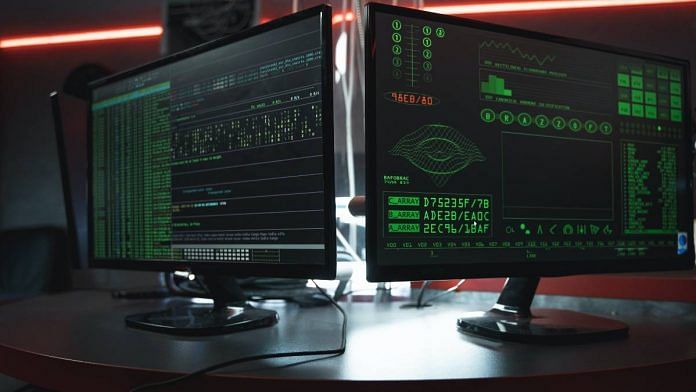New Delhi: In order to better tackle rising cyber crimes, India will have to decide its position as cyberspace becomes bipolar in line with current geopolitics, according to India’s cybersecurity chief.
National Cyber Security Co-ordinator Lieutenant General (Dr) Rajesh Pant was speaking at a 2 July online meeting organised by the Public Affairs Forum of India (PAFI), a not-for-profit society comprising organisations working in the field of public policy.
“In accordance with the geopolitics that is taking place … there is a technological bipolarity that is taking shape in cyberspace also,” Pant said.
The bipolarity is largely split between America and its allies on one side and China and its ally countries on the other.
Pant noted how the US, under the Donald Trump administration and continuing under the Joe Biden administration, started the concept of a “clean network” where only “trusted” equipment is used in telecom networks. In addition, a number of countries are coming together and going for “non-China solutions”.
China, though, is saying a new internet protocol is required and has also released a Global Initiative on Data Security (GIDS) for the world.
GIDS is seen in the media as a way to “wrest control of the data security narrative away from the U.S”.
“These clear divisions are taking place and India has to decide on its future path,” Pant said.
Also read: India plans new cybersecurity strategy after ‘Chinese intrusions’
Why a neutral stance won’t work
From a cybersecurity perspective, it’s important for India to decide its position since criminals are taking advantage of the internet, and a lack of cooperation between countries and of international laws is emboldening cyber criminals, Pant said.
Especially after the onset of the pandemic, cyber crimes have increased. “Cybercrime went up by 500 per cent,” noted Pant.
India, though, has come up with a unique solution when it comes to keeping telecom networks secure from possible spying and hacking, Pant said, pointing to the national security directive for the telecom sector. Approved by the cabinet in December 2020, Pant said this was a “historic” move.
Under the directive, India decided to draw up a “positive list” of companies and not a “negative list” of the ones it was considering possible bans on to keep telecom networks secure. This was unlike the US, the UK, and some European countries that named and targeted some of the Chinese companies, such as Huawei.
India decided that “instead of a negative list, we will prepare a positive list, and we will say who can come in. And the person who can come in, should be a trusted source in terms of our national interest,” Pant explained.
He added that India is the “only country in the world” to have taken this approach.
By June this year, Pant said his office was able to launch a portal named Trustedtelecom.gov.in for telecom service providers to upload details about the telecom equipment they wished to buy. Government officials then perform a detailed background check on the safety of the product based on ownership of the company, product manufacturing and where the semiconductors in the product are coming from.
Also read: How Chinese cyber-attacks, Mumbai blackout depict a new era of low-cost high-tech warfare
‘India responded well to pandemic’
Pant also spoke about the Global Cybersecurity Index (GCI) 2020 released earlier this week on 29 June. The index is by the United Nations’s specialised agency for information and communication technologies, called International Telecommunication Union.
“You will be glad to know that we were 10th overall amongst 194 nations … and in the Asia Pacific region, we were 4th,” said Pant, adding that the ranking was a “good note to start on”.
Cybersecurity from the Indian government point of view, Pant further said, has become an essential service during the pandemic. He endorsed the way ministries were handling the crisis, including the IT ministry, home ministry, health ministry, and telecom department.
In addition, he said the power ministry had in the last few months created sectoral emergency response teams to deal with cybersecurity issues for each vertical, such as the power generation vertical, transmission vertical, distribution, and grid operations.
(Edited by Manasa Mohan)
Also read: Cyber threats now sit alongside nuclear ones – India needs a formal national strategy






